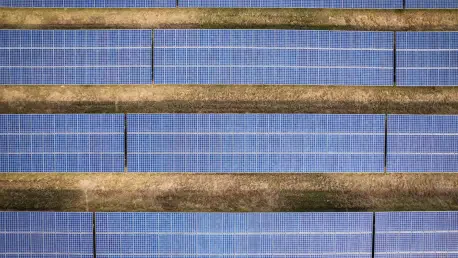In the heart of northern Transylvania, a quiet town named Târgu Lăpuș in Maramureș County is witnessing the dawn of a transformative era with a groundbreaking renewable energy project that could change its future. This small community, like many others across Romania, has faced persistent economic challenges, with local industries faltering and opportunities dwindling. Yet, a new initiative promises not just a shift toward sustainable energy but a potential lifeline for the town’s struggling economy. A massive 200 MW solar park, coupled with an integrated battery energy storage system (BESS), is under development through a public-private partnership valued at EUR 100 million. Spearheaded by Global Energy Asset, a company with Turkish and Romanian roots, this project is set to become the largest solar installation in Transylvania. Spanning 200 hectares, it symbolizes a beacon of hope, raising the question of whether renewable energy can truly breathe new life into Romania’s forgotten towns.
A Bold Partnership for Sustainable Growth
The collaboration behind the Târgu Lăpuș solar park represents a strategic alignment of international investment and local needs. Global Energy Asset, a recently established firm headquartered near Bucharest, brings together Turkish and Romanian investors with a vision for renewable energy. Notably, the company’s leadership includes shareholders linked to prominent Turkish energy figures, signaling a broader wave of foreign interest in Romania’s green sector. This EUR 100 million endeavor is more than just an infrastructure project; it’s a calculated move to address the region’s economic woes while pushing forward environmental goals. The solar park’s scale and innovative battery storage system highlight a commitment to modern energy solutions, positioning Târgu Lăpuș as a potential model for other small towns. This partnership showcases how global expertise can intersect with local priorities, creating a framework that could inspire similar initiatives across the country and beyond.
Beyond the technical aspects, the partnership offers a deeper layer of economic promise for the community. Târgu Lăpuș has struggled with financial instability, exacerbated by the collapse of major local employers like Taparo, a furniture manufacturer once tied to global brands. The town hall’s approval of this solar project reflects a desperate need for innovative revenue streams. By aligning with Global Energy Asset, local authorities are not just securing energy infrastructure but also tapping into a broader vision of sustainable development. The project’s scope extends to providing tangible benefits, such as covering costs for public services and supporting educational initiatives. This approach suggests a nuanced balance between profit motives and social responsibility, aiming to uplift a town that has long grappled with decline. It also underscores a growing trend among smaller Romanian municipalities to leverage green projects as economic catalysts.
Community Benefits and Economic Revival
One of the most compelling aspects of the Târgu Lăpuș solar initiative is the direct impact on residents’ lives. Global Energy Asset has pledged to go beyond mere energy production by offering community-focused benefits that address immediate local needs. These include covering electricity costs for street lighting, establishing scholarships for children, and sponsoring events and institutions within the town. Such commitments are vital in a place where economic hardship has eroded public services and opportunities for the younger generation. This gesture of corporate social responsibility sets the project apart from typical infrastructure developments, framing it as a holistic effort to rebuild trust and hope in a struggling community. It also raises expectations for how renewable energy projects can integrate social welfare into their core objectives, potentially setting a precedent for future endeavors in Romania’s rural regions.
The economic necessity driving this project cannot be overstated, as Târgu Lăpuș exemplifies the plight of many small Romanian towns searching for stability. The insolvency of key industries has left a void that traditional solutions have failed to fill, pushing local authorities to explore unconventional partnerships. The solar park emerges as a critical business venture, promising not only job creation during construction but also long-term financial benefits through energy production and related activities. This initiative mirrors a broader movement across the country, where municipalities are increasingly turning to sustainable projects to stimulate growth. The mutual benefits are clear: investors gain access to a promising market with significant potential, while towns secure much-needed economic support alongside cleaner energy sources. This synergy could redefine how rural areas approach development, blending environmental innovation with tangible economic recovery.
Reflecting on a Model for Progress
Looking back, the Târgu Lăpuș solar park stood as a pioneering effort that blended international investment with local aspirations. The EUR 100 million project, backed by Global Energy Asset, demonstrated how public-private partnerships could tackle both environmental and economic challenges in tandem. The involvement of Turkish investors highlighted a growing global interest in Romania’s renewable energy landscape, while the community benefits offered a refreshing focus on social impact. As this initiative unfolded, it became evident that such models held the potential to reshape struggling towns. Moving forward, stakeholders were encouraged to replicate this balanced approach, ensuring that future projects prioritized both sustainability and local welfare. By fostering similar collaborations, Romania could chart a path toward widespread revitalization, proving that green energy was not just a technical solution but a catalyst for enduring change.









